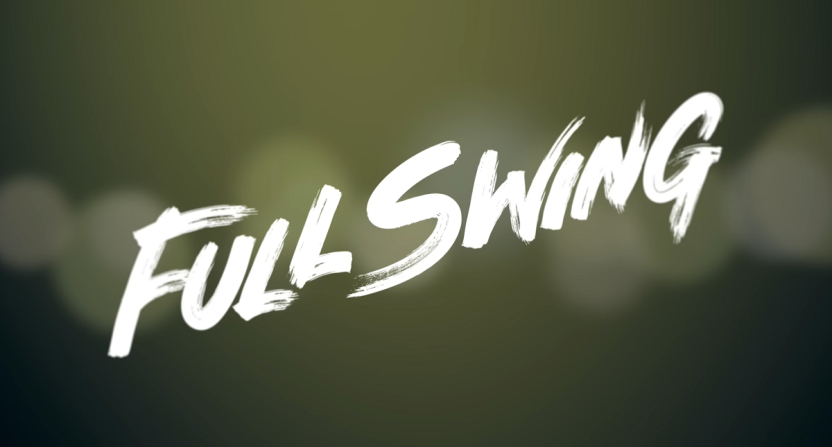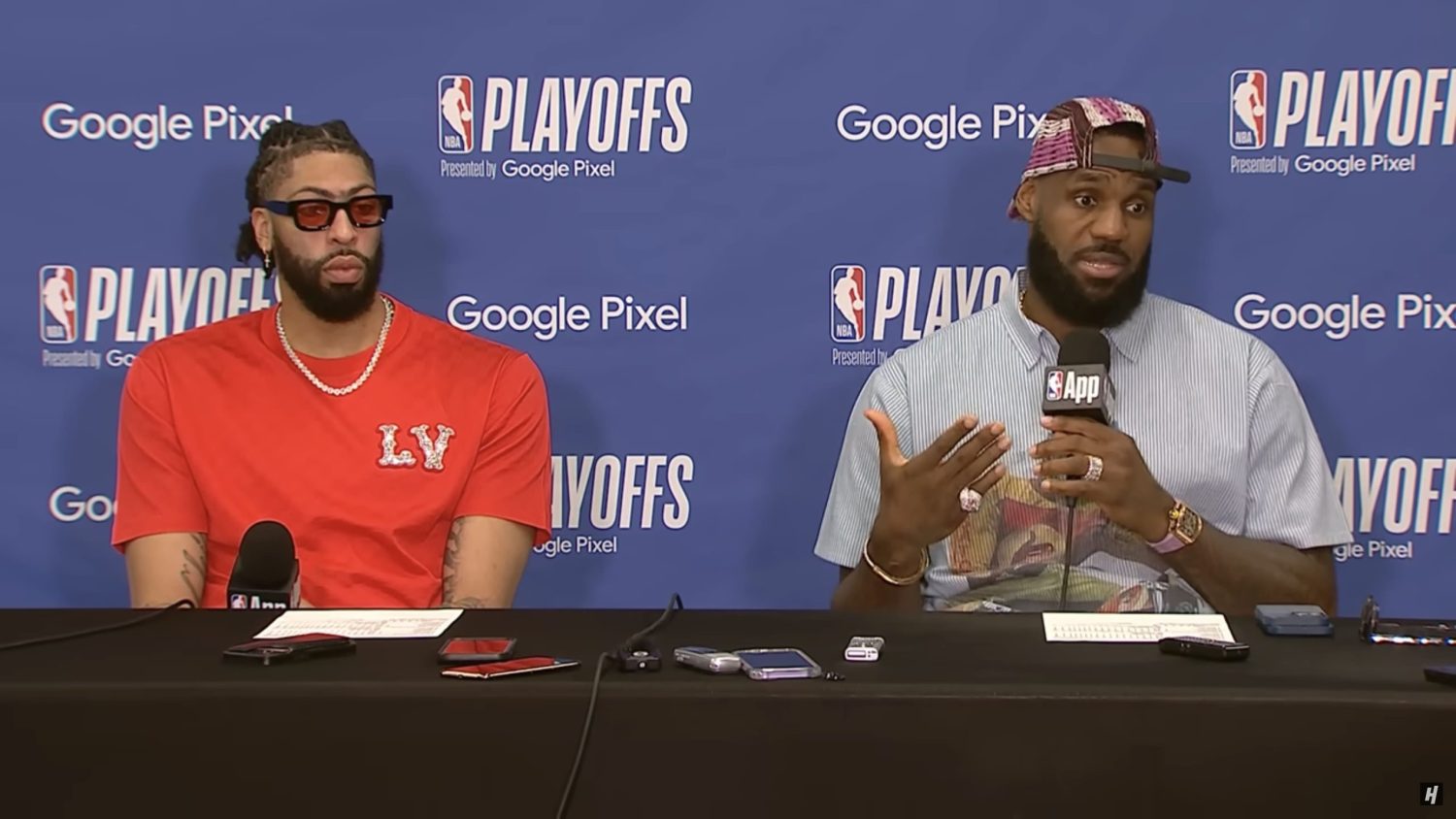The crossover success of Netflix‘s Formula 1 docuseries Drive to Survive practically ensured that Netflix would look to replicate that winning formula (sorry) with other sports and leagues.
Crucially, though, the fact that F1 ratings and general overall interest in the United States have skyrocketed in recent years meant that other sports, athletes, and leagues would likely be just as eager to participate. The PGA Tour has clearly targeted a younger audience for years (though their policy on social media content sharing would suggest otherwise), and this week finally saw the release of Full Swing, a docuseries from the same production company as Drive to Survive, which whittled down thousands of hours of all-access filming over the course of 2022 into eight digestible episodes.
So, simply translate the same format with the same people onto another sport with egos and drama, package it for Netflix, and release it to the masses. What could go wrong? I’ve watched the first four episodes for this review, and I can unfortunately say that a LOT can go wrong.
A lot can go right, too, to be clear. There are some key highpoints in the first half of the series, and presumably a few more on the back half as well. But the first three episodes, especially, painted a fairly bleak picture, teetering into wealth porn without any real hints that viewers are supposed to be reacting with anything beyond oohs and aahs.
Drive to Survive has a bit of this, too, of course, although it’s saved by the fact that places like Monaco, Melbourne, Dubai, and Tokyo are infinitely more exotic than Jupiter, Florida and Scottsdale, Arizona. (That doesn’t stop the show from using similar bold graphics to announce locale switches, though.) The series opens with Jordan Spieth and Justin Thomas flippantly gambling thousands of dollars to pass time on a private jet, somehow coming across as both bored and douchey. (Spieth fares better, which isn’t surprising.)
Which, again, would be fine if the episode in question had any interest in showing them as vulnerable or human; instead, the entire thing too often feels like a vain effort to make them seem aspirationally cool. With Formula 1, there’s much less strain required, because “globally diverse collection of the best race car drivers in the world” is a much easier sell than “bored American prodigies with too much money and free time” on the cool scale. There’s also the very real fact that for drivers, F1 is much more of a meritocracy.
Sure, there are still a few sons of billionaires in the sport by virtue of wealth alone. But series mainstay Daniel Ricciardo just lost his drive for real after a run of bad form. Golf just doesn’t have that kind of drama; the show makes the choice to splash the winnings of featured players in various tournaments, presumably to lend stakes to the proceedings to casual viewers who don’t know how golfers earn their cash. These guys, especially the ones at the top of the sport, are all going to be fine, even before we factor in the fact that professional golfers aren’t walking out onto the course knowing that a mistake by them or a competitor could literally end their life.
The second episode is a slight improvement, focusing on the negative headspace Brooks Koepka found himself in as his game suffered from injuries and general lack of form. Koepka in recent years has been unwittingly vulnerable by virtue of his unwillingness to play along, and obviously the chance to get a glimpse into the mind of a player about to cash in his career relevance for LIV Golf money is a fascinating angle. But it’s still just hard to care about the foibles of a player who has already racked up millions weighing the benefits of potentially signing for even more millions.
There’s a slight divergent storyline in episode two focusing on 2022 Masters champ Scottie Scheffler, an obvious contrast to Koepka in both form and mental outlook. (An episode highlight: Koepka comments on this disparity, noting that he has a million things in his head while Scheffler probably has nothing, and that’s how it should be.) Scheffler comes across as unassuming and grateful, projecting a warmth and comfort with his wife in the glimpse we get of their early marriage, and generally glad to be who he is.
That’s a breath of fresh air for the show, especially in advance of episode three, one of the least enjoyable things I’ve had to watch for this job. Villains are good, to be clear, and Ian Poulter has been one of golf’s main antagonists for nearly two decades, tormenting American players and fans in the Ryder Cup and further tormenting just about any service industry employee unfortunate enough to enter his orbit. Poulter, like Koepka, eventually jumped to LIV Golf, taking Saudi sportswashing money in the face of dwindling career prospects.
Poulter is one of the world’s least self-aware professional athletes, brimming with the sort of pomposity and willingness to hang himself by his own words that should make for an endlessly entertaining documentary experience. Drive to Survive walks this tightrope well with the various big-headed personalities that occupy the sport; it’s always a highlight when a subject comes across much, much differently than they THINK they’re coming across, allowing the show to do some passive skewering.
Full Swing, though, glosses by decades of boorish behavior from Poulter and treats his impending decision to join LIV as “doing what’s best for his family”, in not just Poulter’s words, but in the words of Poulter’s children, who are heavily featured throughout the episode (including during some more private jet time.) To its credit, the third episode doesn’t shy away from the human rights issues at play. But by propping Poulter’s kids up there as a shield, it feels gross, especially because Ian Poulter of all people doesn’t deserve this kind of PR latitude.
This, obviously, has been a fairly negative review to this point, and had I stopped after three episodes I might not have finished the show. It should be noted, too, that I might just be too close to it; plenty of Formula One diehards don’t care for DtS, either, and that’s okay. I follow that sport too, though, and I can at least admire the drama the show’s creators are going for with the various artistic licenses taken. Full Swing, though, didn’t make a compelling case to exist through three episodes, even with similar creative liberties taken.
The fourth episode, though, is one of my favorite things in recent memory. Focusing on journeyman Joel Dahmen, who is the definition of unassuming, it functions as a fantastic look at an athlete who recognizes his own limitations and, rather than work like hell while sacrificing any semblance of balance in his life to squeeze every inch out of his abilities, just sort of shrugs.
You've never seen golf like this! Full Swing is now on Netflix. pic.twitter.com/MY6ELpLrzy
— Netflix (@netflix) February 15, 2023
Supported by truly loving family and friends (including caddie Geno Bonnalie), it’s a humanizing and insightful portrait of a player not at the top of the world, flying privately and sitting glumly for hours on his pier. (Even seeing the contrast in how Dahmen and Koepka interact with their dogs was impossibly telling.)
There’s a quick moment from the 2022 U.S. Open where Jon Rahm, Rory McIlroy, and Collin Morikawa are sitting at a table preparing for their usual weekends of contention. In the lead himself, Dahmen walks in and gets a quick greeting from the trio; after he leaves, they remark upon how well he’s playing before getting back to the kinds of intra-superstar discussions they usually have.
Max Homa pops up often throughout this episode, too, but it’s always to talk about how much better Dahmen is at golf than Dahmen himself believes. The entire thing manages to bring together some of the more well-adjusted people in golf; for once watching the show, I found myself wishing I could hang out with everyone involved. It’s telling that would mean shopping for strollers or playing cornhole at a backyard party, and not gambling on a private jet or sitting infinity poolside behind a so tasteful it’s soulless Florida mansion.
Hopefully the second half of the show taps into more of what made that fourth episode worth watching. But that fourth episode justifies the entirety of Full Swing existing. It’s a must-watch sports documentary all on its own. I just wish more of the show was like it.







